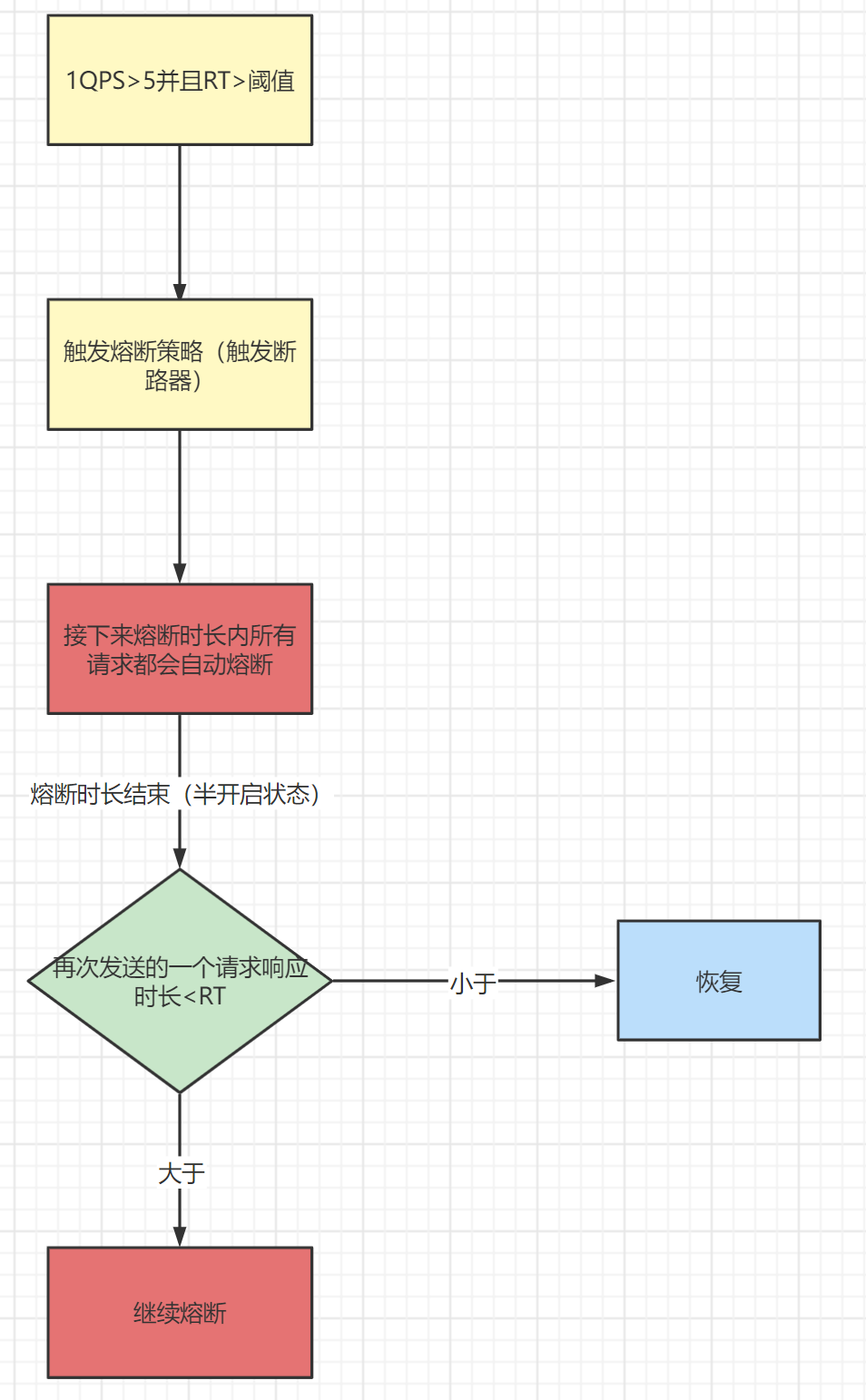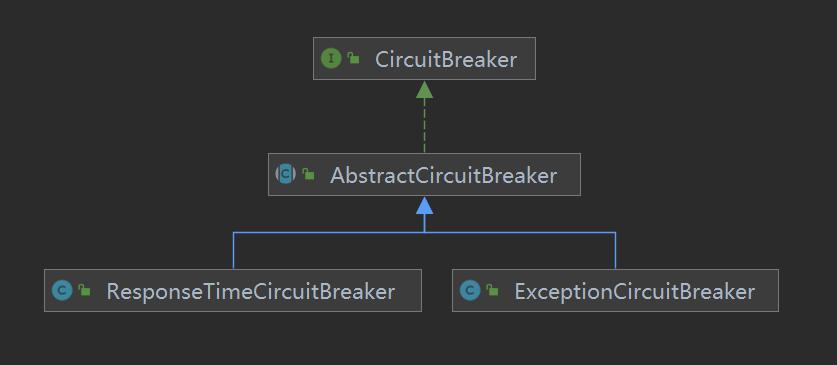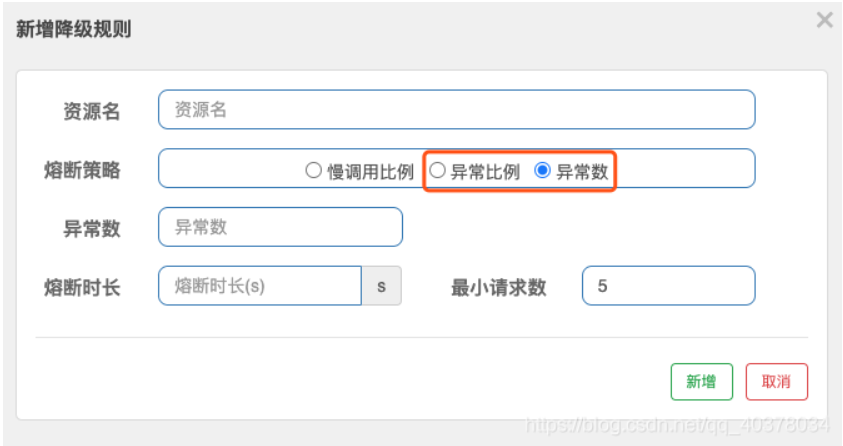Sentinel源码之熔断降级DegradeSlot解析
DegradeSlot解析
//DegradeSlot.entry @Override public void entry(Context context, ResourceWrapper resourceWrapper, DefaultNode node, int count, boolean prioritized, Object... args) throws Throwable { // 熔断降级检测 performChecking(context, resourceWrapper); // 触发下一个节点 fireEntry(context, resourceWrapper, node, count, prioritized, args); }那我们先来跟踪熔断降级检测的方法,在这里我们可以看见,这里其实就是对熔断器的状态进行判断
void performChecking(Context context, ResourceWrapper r) throws BlockException { // 获取所有资源的熔断器 List<CircuitBreaker> circuitBreakers = DegradeRuleManager.getCircuitBreakers(r.getName()); // 判断是否获取到熔断器,如果为空直接结束 if (circuitBreakers == null || circuitBreakers.isEmpty()) { return; } for (CircuitBreaker cb : circuitBreakers) { // 判断所有熔断器的状态,如果是开启状态直接抛出异常 if (!cb.tryPass(context)) { // 此异常继承于BlockException throw new DegradeException(cb.getRule().getLimitApp(), cb.getRule()); } } }而真正判断是否需要开启熔断器是在exit方法中进行的,这个方法是在业务方法执行以后调用了,熔断器需要收集业务异常或者业务的执行时间来判断是开启熔断
@Override public void exit(Context context, ResourceWrapper r, int count, Object... args) { // 如果当前其他的Slot已经有了BlockException,就直接跳过 Entry curEntry = context.getCurEntry(); if (curEntry.getBlockError() != null) { fireExit(context, r, count, args); return; } // 通过资源名称获取熔断器 List<CircuitBreaker> circuitBreakers = DegradeRuleManager.getCircuitBreakers(r.getName()); if (circuitBreakers == null || circuitBreakers.isEmpty()) { fireExit(context, r, count, args); return; } if (curEntry.getBlockError() == null) { // passed request // 调用CircuitBreaker的onRequestComplete()方法 for (CircuitBreaker circuitBreaker : circuitBreakers) { circuitBreaker.onRequestComplete(context); } } fireExit(context, r, count, args); }在这个代码中,有一个比较关键的地方就是CircuitBreaker(熔断器)
CircuitBreaker熔断器
首先我们要知道其实CircuitBreaker是一个接口
/** * 熔断器中将三种熔断策略封装(慢调用比例/异常比例/异常数)为两种熔断器: * 响应时间熔断器、异常熔断器 */ public interface CircuitBreaker { /** * Get the associated circuit breaking rule. * * @return associated circuit breaking rule * 获取熔断规则 */ DegradeRule getRule(); /** * Acquires permission of an invocation only if it is available at the time of invoking. * * @param context context of current invocation * @return {@code true} if permission was acquired and {@code false} otherwise * 判断是否需要降级 返回值为false开启降级 */ boolean tryPass(Context context); /** * Get current state of the circuit breaker. * * @return current state of the circuit breaker * 当前熔断器状态 */ State currentState(); /** * <p>Record a completed request with the context and handle state transformation of the circuit breaker.</p> * <p>Called when a <strong>passed</strong> invocation finished.</p> * * @param context context of current invocation * 回调方法 当请求通过后触发 */ void onRequestComplete(Context context); /** * Circuit breaker state. * 三种熔断器状态: * OPEN开启 * HALF_OPEN半开启 * CLOSED关闭 */ enum State { /** * In {@code OPEN} state, all requests will be rejected until the next recovery time point. */ OPEN, /** * In {@code HALF_OPEN} state, the circuit breaker will allow a "probe" invocation. * If the invocation is abnormal according to the strategy (e.g. it's slow), the circuit breaker * will re-transform to the {@code OPEN} state and wait for the next recovery time point; * otherwise the resource will be regarded as "recovered" and the circuit breaker * will cease cutting off requests and transform to {@code CLOSED} state. */ HALF_OPEN, /** * In {@code CLOSED} state, all requests are permitted. When current metric value exceeds the threshold, * the circuit breaker will transform to {@code OPEN} state. */ CLOSED } }以上代码中其中三种熔断状态对应的原理如下
熔断策略
对应的实现类有两个ExceptionCircuitBreaker(异常熔断器)、ResponseTimeCircuitBreaker(响应时间熔断器),这个我们可以从类图看到
那我们这里来看看ExceptionCircuitBreaker(异常熔断器),对应的策略是
我们来看对应回调方法ExceptionCircuitBreaker.onRequestComplete
@Override public void onRequestComplete(Context context) { Entry entry = context.getCurEntry(); if (entry == null) { return; } Throwable error = entry.getError(); // 异常事件窗口计数器 SimpleErrorCounter counter = stat.currentWindow().value(); // 如果有异常,异常数+1 if (error != null) { counter.getErrorCount().add(1); } // 总异常数+1 counter.getTotalCount().add(1); handleStateChangeWhenThresholdExceeded(error); } private void handleStateChangeWhenThresholdExceeded(Throwable error) { // 如果熔断器已经开启直接返回 if (currentState.get() == State.OPEN) { return; } // 进入办开启状态 if (currentState.get() == State.HALF_OPEN) { // In detecting request if (error == null) { // 本次请求没有出现异常,关闭熔断器 fromHalfOpenToClose(); } else { // 本次请求出现异常,打开熔断 fromHalfOpenToOpen(1.0d); } return; } List<SimpleErrorCounter> counters = stat.values(); long errCount = 0; //异常数量 long totalCount = 0; //总异常数 for (SimpleErrorCounter counter : counters) { errCount += counter.errorCount.sum(); totalCount += counter.totalCount.sum(); } // 请求数量<最小的请求数量时不开启熔断 if (totalCount < minRequestAmount) { return; } double curCount = errCount; // 熔断策略为慢调用比例 if (strategy == DEGRADE_GRADE_EXCEPTION_RATIO) { // Use errorRatio // 计算百分比 curCount = errCount * 1.0d / totalCount; } // 错误率或者错误数大于阈值时开启熔断 if (curCount > threshold) { transformToOpen(curCount); } }
标签:
Spring Cloud Alibaba
, 微服务







【推荐】国内首个AI IDE,深度理解中文开发场景,立即下载体验Trae
【推荐】编程新体验,更懂你的AI,立即体验豆包MarsCode编程助手
【推荐】抖音旗下AI助手豆包,你的智能百科全书,全免费不限次数
【推荐】轻量又高性能的 SSH 工具 IShell:AI 加持,快人一步
· 周边上新:园子的第一款马克杯温暖上架
· 分享 3 个 .NET 开源的文件压缩处理库,助力快速实现文件压缩解压功能!
· Ollama——大语言模型本地部署的极速利器
· DeepSeek如何颠覆传统软件测试?测试工程师会被淘汰吗?
· 使用C#创建一个MCP客户端